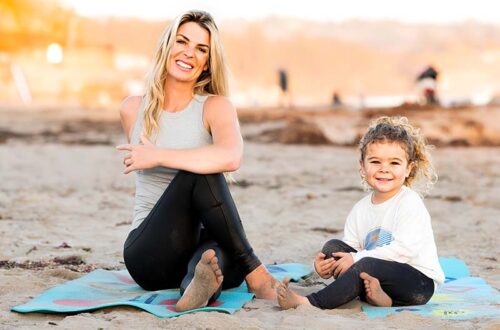
2024 Parenting Goals
New year, new parenting goals! Positive Discipline has so many great ideas for nurturing the relationship between the parent and child. A healthy, mutually-respectful relationship is the greatest parenting tool we can have. There are so many ways to improve our relationship with our children (connection before correction, using kindness and firmness at the same time, understanding the belief behind the behavior, etc.) and there are just as many ways to hurt this important relationship (using punishment, shame, humiliation, blame, etc.)
It can feel daunting to try to implement many new parenting techniques at once. With this in mind, here’s a month-by-month guide with a different Positive Discipline parenting tool or concept to try out each month. Cheers to making 2024 the year we create respectful relationships with our children!
January- Long-Term Goals List
First, make a list of all of the problems/issues that you are currently facing with your child. When I facilitate parenting classes, some of the things that parents typically put on this list include: bedtime struggles, whining, sibling rivalry, tantrums, etc. Next, make a list of all of the qualities you’d like to see in your child when they are grown (in 20 years or so). Parents often list things like: kind, happy, healthy, proud of themself, social, successful, etc. Now look at these two lists side-by-side and think about how we get from where we are now to where hope our children get to in 20 years.
Spoiler alert: the way we get there is modeling. The good news and the bad news is that our children are always watching us and that humans learn through modeling. So if we want our grown children to be kind, for example, we must be mindful about modeling kindness to our children as we are raising them. I recommend keeping the second list somewhere you can see it regularly, to remind you that parenting is a long-term job and that we are raising humans (not just children) and we have long-term goals for our humans.
February- Routine Chart
First, ditch the reward/star chart. Why? Because when children are raised with rewards and punishments, they learn to focus on extrinsic rewards rather than learning to trust their intrinsic sense of what feels right.
Next, create a routine chart WITH your child (not for your child). Brainstorm together all of the steps that your child does during certain routines (getting ready for school or getting ready for bed are two typical ones). Next take pictures (or have your child draw pictures) of each step. For example, a child’s bedtime routine chart might have a picture of your child brushing their teeth, followed by a picture of your child putting on PJs, followed by a picture of your child’s bookshelf, etc. Routine charts can be very simple. The idea is that you work together to create it and you use it as a visual aid in your home.
March- Connection Before Correction
We are constantly giving our children directions and corrections. When you are about to give your child a direction (“it’s time to get in the car,” or “come wash your hands”), try starting by connecting with them first. This can look like: “Hey Bud. I see you’re building two towers with your blocks. Want to tell me about them? It’s going to be time to get in the car to go to Grandma’s house in 5 minutes. You can play with blocks for a few more minutes and then it will be time to get in the car.” This is a small tweak that can have a huge impact on your relationship with your child.
April- Cool-Down Space
Create a cozy cool-down space in your home WITH your child (not for your child) and discuss what the space is for. This is a space where anyone who is feeling angry or sad or stressed can go to help them take a break and cool down until they feel better. A cool-down space might have pillows, cozy stuffed animals, books, fidgets, or anything else your child chooses (except screens- keep the cool-down space screen-free). Model going to the cool-down space when you feel angry or sad. Make sure that the cool-down space is always optional and no one in the family is forced to go there as a punishment.
May- Family Meetings
Start a weekly family meeting. Children learn so much during family meetings, such as listening, mutual respect, giving others compliments, problem-solving, focusing on solutions, etc. Family meetings should take place on the same day every week if possible. They can be only 15-20 minutes long (especially the first few times) and they can have a very simple format:
• Compliments
• Agenda (keep a white board or paper on the fridge so everyone can add items to the agenda throughout the week)
• Brainstorming solutions to agenda items
• Calendar for the upcoming week
• Family fun ideas
Throughout the week, when a problem arises, be sure to offer your child the opportunity to add this item to the agenda for the next family meeting.
June- Understanding the Belief Behind the Behavior
Picture an iceberg. The part of the iceberg we can see above the water represents the child’s behavior. All of the rest of the iceberg under the surface of the water (the part we can’t see) represents the child’s belief behind their behavior. When you find yourself struggling with a particular unhelpful behavior that your child seems to be repeating over and over, you may find that the behavior keeps coming up because you’ve been focused on trying to stop the behavior, rather than focused on what the child’s belief might be beneath the behavior. For example, if a child has decided that they are significant in the family only when mom takes her focus off the other children and puts her focus onto them, they may exhibit many undesirable behaviors to get mom’s attention. If mom just focuses on the behavior (“don’t hit!”) and not on what’s going on beneath the behavior (“It looks like you’re wanting my attention. Are you feeling sad that the baby has been getting a lot of my time lately? I’m looking forward to our special time tonight when we play a game.”) then the behavior will likely keep coming up. If the belief behind the behavior is acknowledged and considered, the behavior will likely decrease.
July- Anger Wheel of Choice
Make an anger wheel of choice WITH your child (not for your child) and talk about what it’s for. When we are angry we are unable to use our full brains and we can often make destructive choices. If we can take some time while we are calm to brainstorm things we CAN do when we are angry, we can have those options available. An anger wheel of choice can be made on a paper plate or on a circular paper. Some things that some families I’ve worked with have put on their anger wheels include: yelling into a pillow, pounding pegs, drawing or writing about the problem, running outside, going to your cool-down space, etc. Keep your anger wheel of choice somewhere in the house where everyone can view it and model using ideas from it when you feel angry.
August- Use Encouragement Instead of Praise
Instead of “you made a beautiful painting,” try “tell me about your painting.”
Instead of “you are the smartest kid ever,” try “you must have worked hard.”
Instead of “Good job!” try saying nothing and reaching out a hand for a high five.
Instead of “I saw that good deed you did… I’m giving you a star,” try “how did that feel?”
Instead of “Good boy!” or “Good girl!” try “I love you no matter what”
When we praise children, they learn how to become people-pleasers and they learn to feel worthwhile when others approve. When we encourage children, they learn self confidence, self-trust and self-discipline. Think of praise as dessert; it’s ok every once in a while, but you don’t want that to be your entire diet.
September- See Mistakes as an Opportunity for Learning
This switch in perspective can make all the difference in nurturing your relationship with your child and it’s also a great way to make sure your child grows into a well-rounded, self-confident person who doesn’t struggle with perfectionism. Remember to model seeing your own mistakes as an opportunity for learning by acknowledging and celebrating your own mistakes to child. It can be very powerful to say “I made a mistake! I’m so glad I did that so I can learn a new, better way of getting this done.” Treat your child’s mistakes with the same grace.
October- Curiosity Questions
If your child is “in trouble,” try using curiosity questions rather than lecturing. Examples of Curiosity Questions:
- What happened?
- What do you feel about what happened?
- What was your idea? What were you trying to accomplish?
- What ideas do you have for solutions?
Lecturing a child involves shame and blame. Children do better when they feel better. If they messed up it doesn’t actually help to try to make sure they feel bad. Asking questions invites your child into the process of critical thinking and making amends. It is best to wait until everyone is calm to ask these questions and truly stay curious (without your own agenda) about your child’s truth
November- Special Time
Think of your relationship with your child as a bank account. You want to have more deposits than withdrawals to keep the bank account out of the negative. Withdrawals can occur in the form of shaming, blaming, arguing, punishing, etc.
One of the best ways to put “deposits” in to your relationship is with special time. I recommend scheduling special time with each child and putting it on the calendar with them. Special time just means uninterrupted time with just you and your child doing anything the child enjoys. Just knowing they have their parent all to themselves and that their parent is giving them undivided attention can be so meaningful to a child.
December- Be the Asking Parent, not the Telling Parent
Instead of “Get your sweatshirt on,” try “What do you need for going outside?”
Instead of “Brush your teeth,” try “What’s next on your routine chart?”Instead of “Get in the car,” try “Will you walk to the car or hop like a bunny?”
When we ask children questions, we get far less resistance than when we tell them what to do. Questions give them a chance to use the logical and curious parts of their brain, while commands invite defensiveness and power struggles. This is another small tweak that can have a huge impact on the peace in the home and the parent-child relationship
Hannah Stubblefield is a certified Positive Discipline Parent Educator. She is a former teacher and current co-owner of Wonderland Toys & Classroom Resources in Aptos. She is wife to Chris, step-mom to Sebastian, boy-mom to Adam, girl-mom to Maya, and dog-mom to Samson. Check out her upcoming in-person parenting classes at the Family Circle Center in Aptos in 2024!
To learn more about Positive Discipline and to order books, check out positivediscipline.com. To check out our local Positive Discipline resources here in Santa Cruz, go to pdcrcc.org






